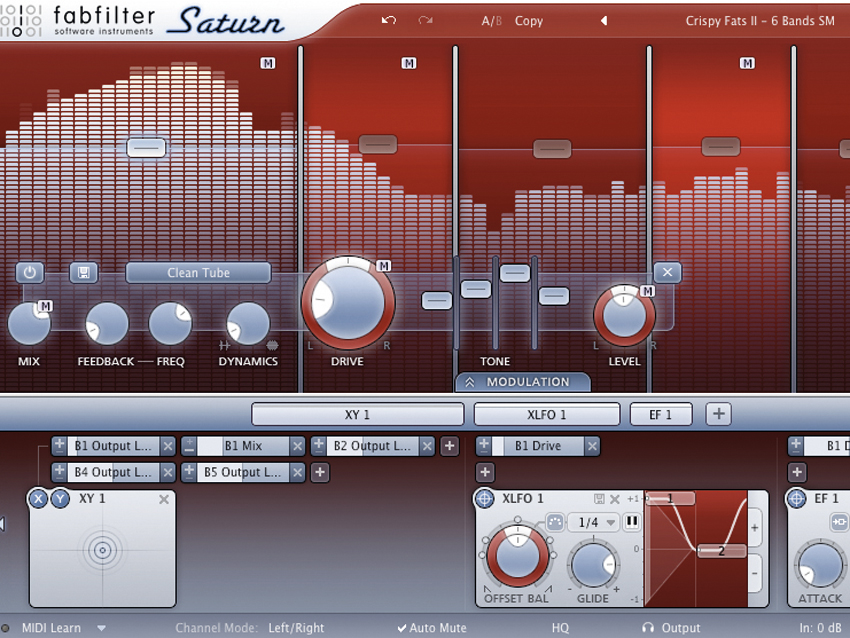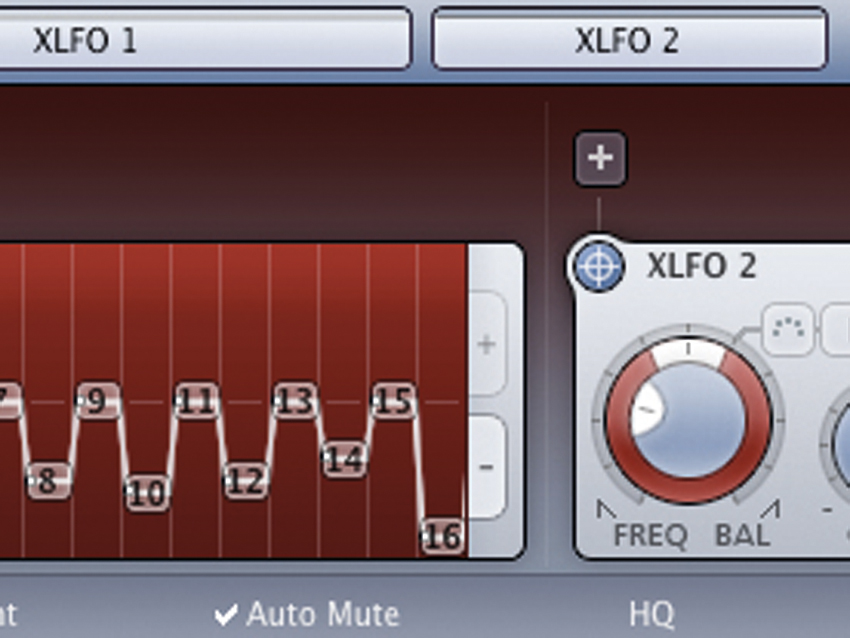MusicRadar Verdict
One of very few multiband plug-ins, Saturn is easy to use, wildly creative and sounds incredible.
Pros
- +
Stunning sound; interactive display makes setting up crossovers effortless; modulation system makes it truly special.
Cons
- -
Very little.
MusicRadar's got your back

FabFilter Saturn

FabFilter Saturn

FabFilter Saturn
In the decade since the release of its first plug-in, One, FabFilter has made an indelible mark on the music production landscape.
Saturn is a multiband saturation and distortion unit with the Fab's famously flexible modulation routing system onboard, and the sort of well-designed, visually assistive interface that we've come to expect from the designers of Pro-Q, Volcano and Timeless.
"The amps, tubes and tape types feel suitably 'real' but more sonically interesting than most"
Saturn presents itself as a single-band plug-in-and a simple looking one at that, with a handful of main controls that look a bit lonely at the bottom of that large, empty display. Looks can be deceptive, though, as becomes apparent the second you actually push a signal through the thing…
The main display serves two purposes, the first of which is as a big, real-time frequency analyser that's always active in the background. As well as looking cool, this gives excellent visual feedback on the effect your tweaking is having on the signal.
Its second purpose is part of the reason for the seemingly modest control set: the display is interactive, and basic multiband operation is handled entirely within it, rather than via conventional knobs and sliders.
To add a multiband crossover (with a fixed 24dB/octave slope), click the '+' button that appears when the mouse pointer approaches the top of the display. The crossover appears as a vertical line, which can be dragged left and right to the desired frequency.
The frequency range on either side of the line becomes a separately controlled band, the volume of which is set by raising or lowering the handle that appears in the middle (or via the Level knob).
Click a band to select it for editing with the main controls, all of which operate on a per-band basis, including distortion Style; drag to select contiguous bands; hold Ctrl/Cmd to select non-contiguous bands etc. Up to six bands can be activated, and for extra editing wiggle room, the GUI has a Wide setting, about 30 per cent wider than the Normal one.
Just drive
So, what can you actually do to each of those bands? Saturn offers 16 saturation, distortion and clipping Styles, taking in tube, tape and amp algorithms, as well as a trio of extreme 'creative' distortions.
Each band can be set to its own Style, and everything from gentle tape-like warming to total decimation is catered for with the regular options, while the three mad ones push things over the limit (pun half intended). Destroy mode, for example, wantonly combines bitcrushing, sample rate reduction and soft clipping; and Smudge does all manner of weird temporal stuff.
The Drive knob sets the level of the input signal into the algorithm (and changes the colour of the display background) and can be panned, for stereo effects.
There's also a mid/side conversion mode, in which, rather than L/R panning, the Drive and Level pan controls set the balance between the mid and side signals for each of those two stages. The Mix knob, meanwhile, enables parallel processing.
Further sound shaping is on hand in the shape of the Dynamics knob, a feedback loop with a ringing frequency range of 10-1000Hz (for emulating mic/speaker feedback), and a four-band amp-style 'tone' EQ.
About that modulation
Oh, and then there's FabFilter's superb modulation system, of course, which is as awesome here as it is in the company's other plug-ins and enables you to design set-ups of staggering complexity. Hit the Modulation tab to reveal the slide-down interface, then click in as many envelope generators (six max), envelope followers (four max), XLFOs (six), XY controllers (four) and MIDI CC sources (10) as you need.
To assign targets simply drag the 'source drag button' from the modulator to the desired parameter in the selected band and set the mod depth using the slider. You can assign a modulator to as many controls as you like, and as many modulators as you like to one control, up to a maximum of 50; and clicking the M button on a control highlights all of the slots modulating it.
Chief among the modulators is the amazing XLFO, a highly configurable modulation step sequencer (up to 16 steps) with its own graphical editing interface.
In additional to all this, the usual FF niceties are in place: MIDI learn, section presets, the help system, oversampling, undo/redo, A/B switching, HQ oversampling mode, and a large library of excellent categorised presets.
Saturn finish
Even as a single-band unit, Saturn does a stunning job of saturating and distorting any source thrown at it, but add multiband functionality and all that per-band modulation and you have a saturation/distortion design tool with governance over every domain - frequency, volume, dynamic range, time and panorama.
The quality of the algorithms is palpable: the amps, tubes and tape types feel suitably 'real' but more sonically interesting than most, and the movement and 'funk' that can be imposed on them is nothing short of dazzling. For guitars, smooth, musical tone enhancement is as easily attainable as screaming overdrive; drums and percussion get beefed up, thickened and rhythmically enhanced; basses and lead synths are pushed in all manner of pseudo-waveshaping directions; and vocals can be subtly redefined in the mix or treated to extreme modulated distortion for special effects.
The Dynamics control does a solid turn as a one-knob compressor and opens up some interesting rhythmic possibilities as an expander (although being program-dependent and fully automatic, it certainly won't always mark the end of your signal chain), while the Tone section is great for quick post-distortion frequency shaping. And despite all that power, Saturn couldn't be easier or more fun to use.
There are a few things we'd love to see added. First, a bit more control over the compressor/expander would feel like more than mere luxury, as would the ability to (somehow!) view the controls for multiple bands at once.
It would also be genuinely useful if the real-time movements of modulated parameters were made visible, á la FXpansion's Transmod system, for example. Also, you can't mute/solo individual bands (this is already in the pipeline, though, according to FabFilter), and some preferences for the frequency analyser would be good.
Wishlist aside, Saturn has already become our new go-to saturator and distortion plug-in for both conventional single-band roughing up of sounds and - more importantly - radical rhythmic reshaping. It's out of this world.
A music and technology journalist of over 30 years professional experience, Ronan Macdonald began his career on UK drummer’s bible, Rhythm, before moving to the world’s leading music software magazine, Computer Music, of which he was editor for over a decade. He’s also written for many other titles, including Future Music, Guitarist, The Mix, Hip-Hop Connection and Mac Format; written and edited several books, including the first edition of Billboard’s Home Recording Handbook and Mixing For Computer Musicians; and worked as an editorial consultant and media producer for a broad range of music technology companies.










